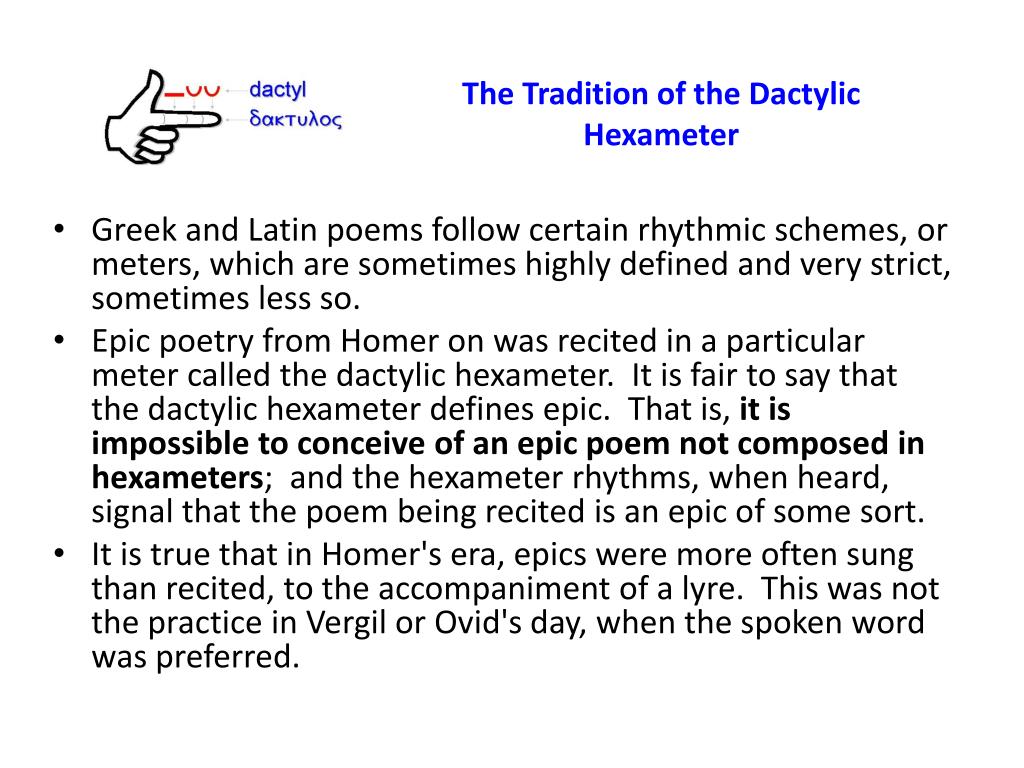

They are generally considered the most grandiose and formal meter.Īn English-language example of the dactylic hexameter, in quantitative meter:ĭown in a | deep dark | dell sat an | old cow | munching a | beanstalk Hexameters are frequently enjambed-the meaning runs over from one line to the next, without terminal punctuation-which helps to create the long, flowing narrative of epic. Hexameters also have a primary caesura-a break between words, sometimes (but not always) coinciding with a break in sense-at one of several normal positions: After the first syllable of the second foot after the first syllable in the third foot (the "masculine" caesura) after the second syllable in the third foot if the third foot is a dactyl (the "feminine" caesura) after the first syllable of the fourth foot (the hephthemimeral caesura). (Note that - = a long syllable, ⏑ = a short syllable, ⏕ = either one long or two shorts, and X = anceps syllable.) Thus the dactylic line most normally is scanned as follows: The sixth foot can be filled by either a trochee (a long then short syllable) or a spondee. The fifth foot is usually a dactyl (around 95% of the time in Homer). Specifically, the first four feet can either be dactyls or spondees more or less freely.

In strict dactylic hexameter, each foot would be a dactyl (a long and two short syllables), but classical meter allows for the substitution of a spondee (two long syllables) in place of a dactyl in most positions. A dactylic hexameter has six (in Greek ἕξ, hex) feet.


 0 kommentar(er)
0 kommentar(er)
